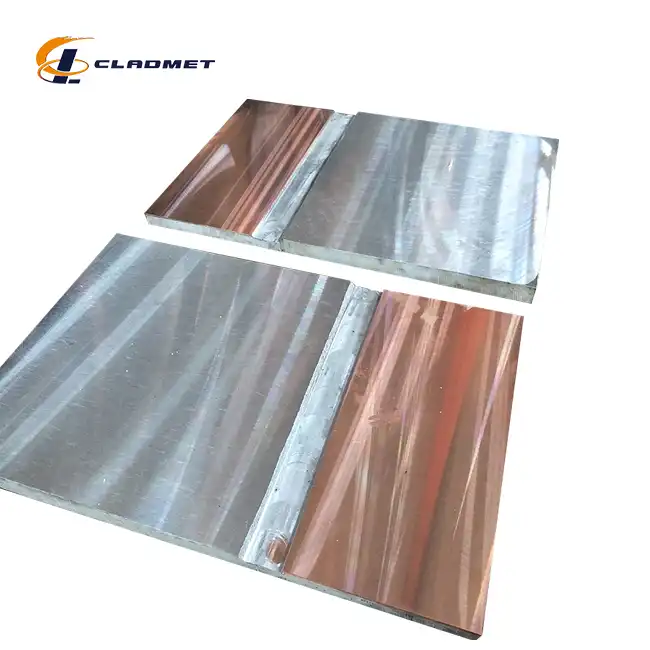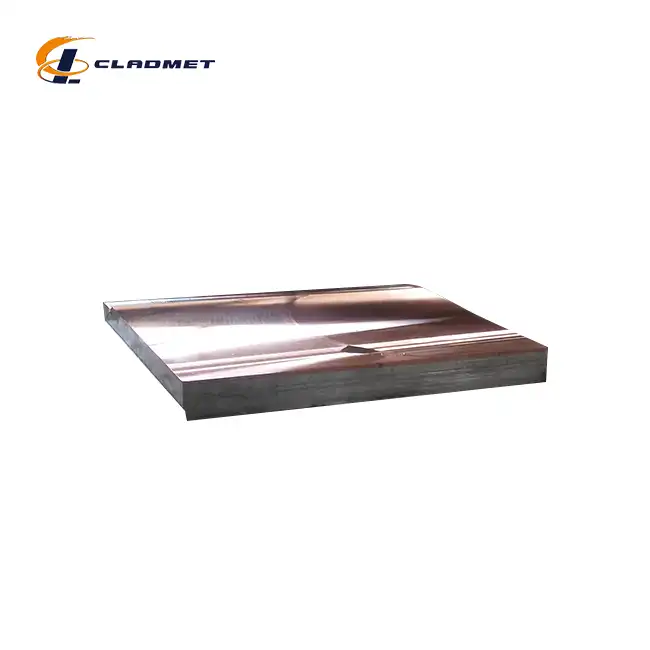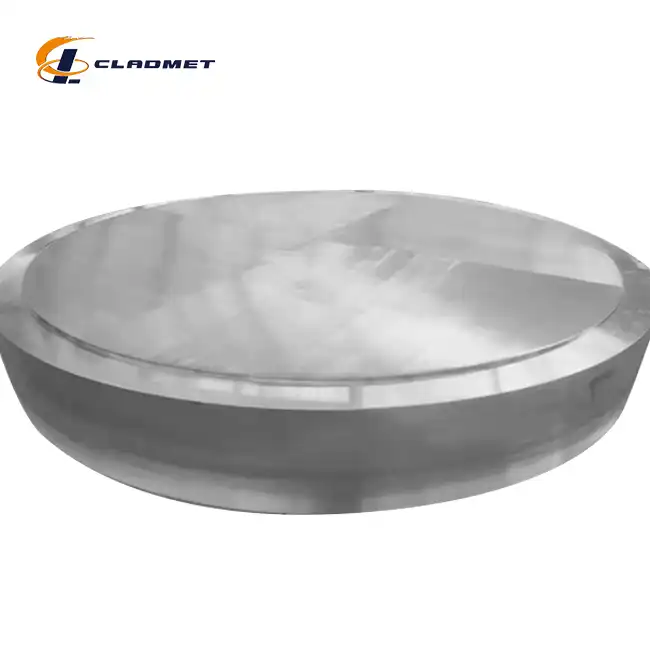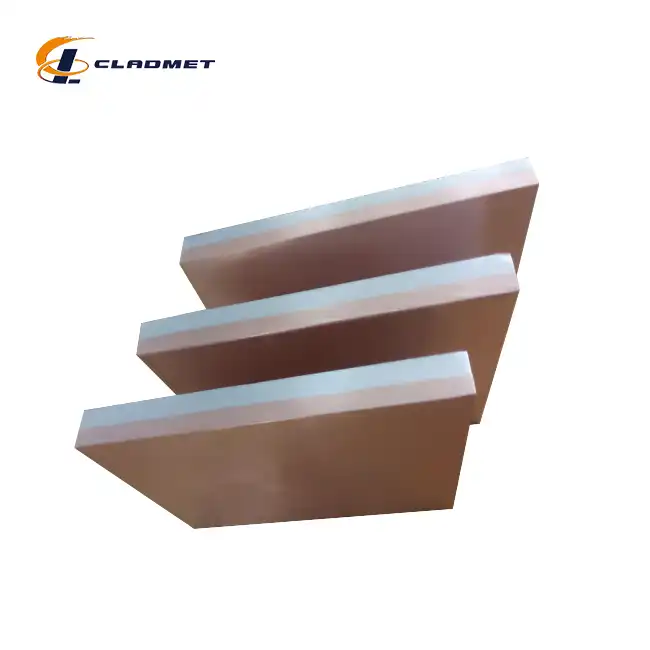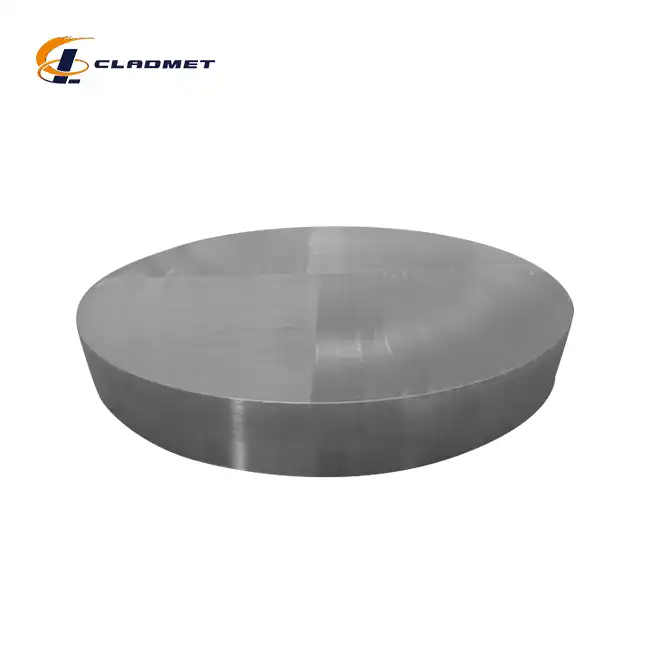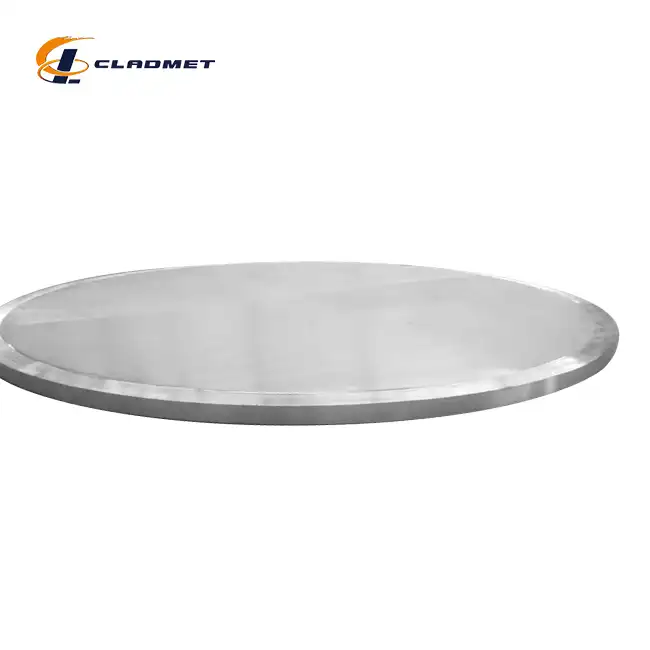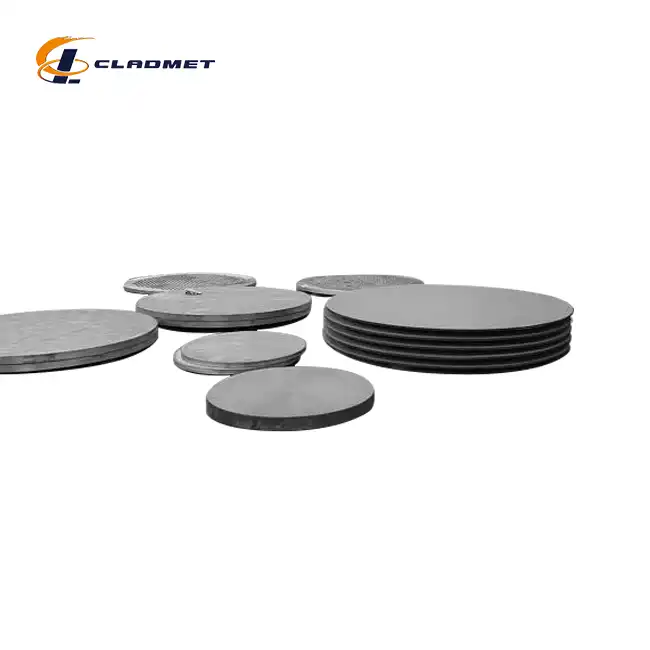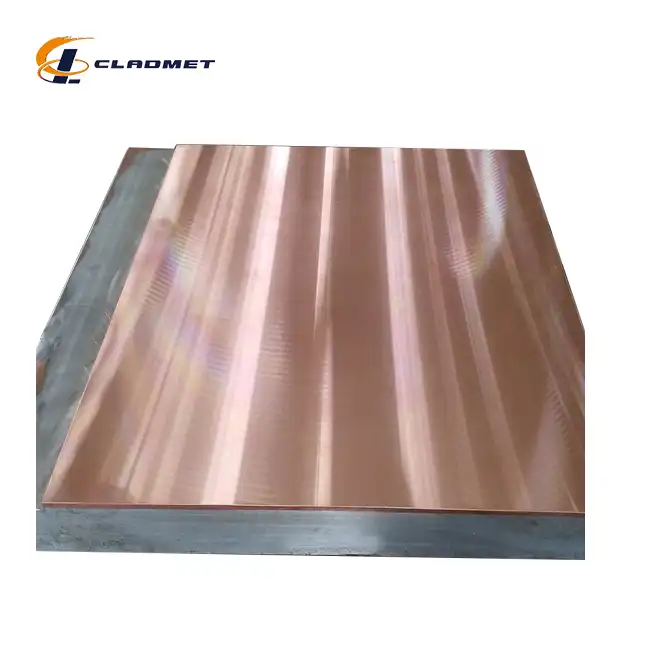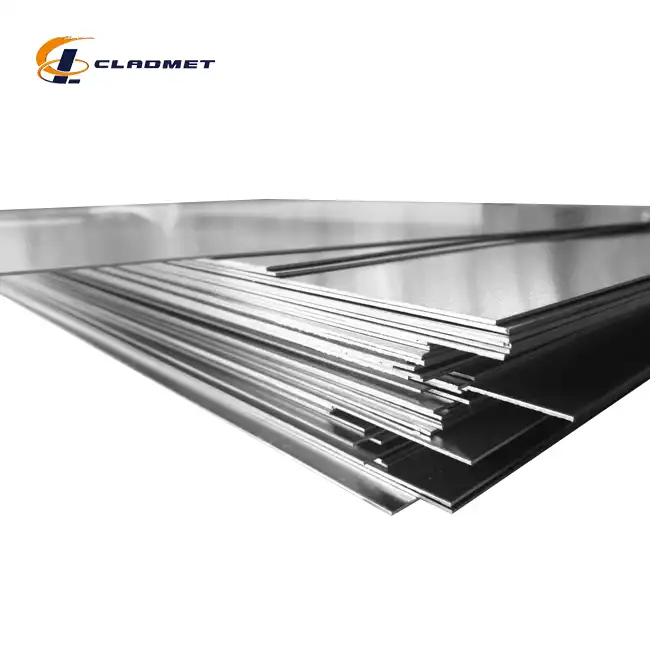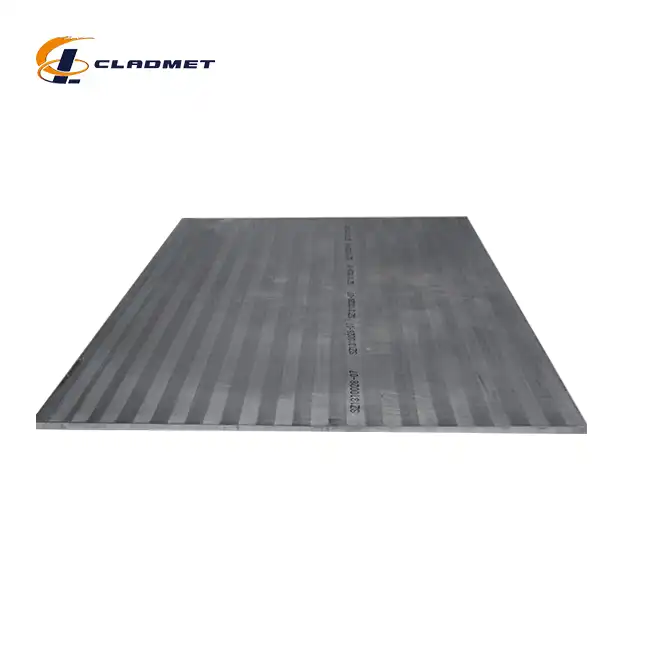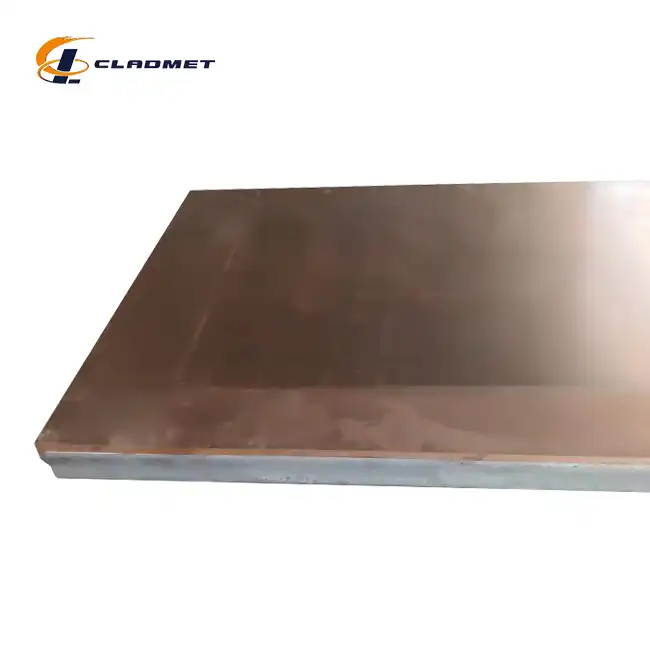How can a 3mm titanium sheet be machined or formed?
 2025-04-17 09:33:01
View:389
2025-04-17 09:33:01
View:389When working with 3mm titanium sheet, understanding the proper machining and forming techniques is critical to achieving optimal results. Titanium presents unique challenges due to its exceptional strength-to-weight ratio and distinctive metallurgical properties. The 3mm titanium sheet, in particular, offers a balance of formability and rigidity that makes it suitable for numerous high-performance applications. However, successful machining and forming of this material requires specialized knowledge, appropriate tooling, and precise methodology to harness its full potential while avoiding common pitfalls that can compromise the material's integrity or the finished product's quality.
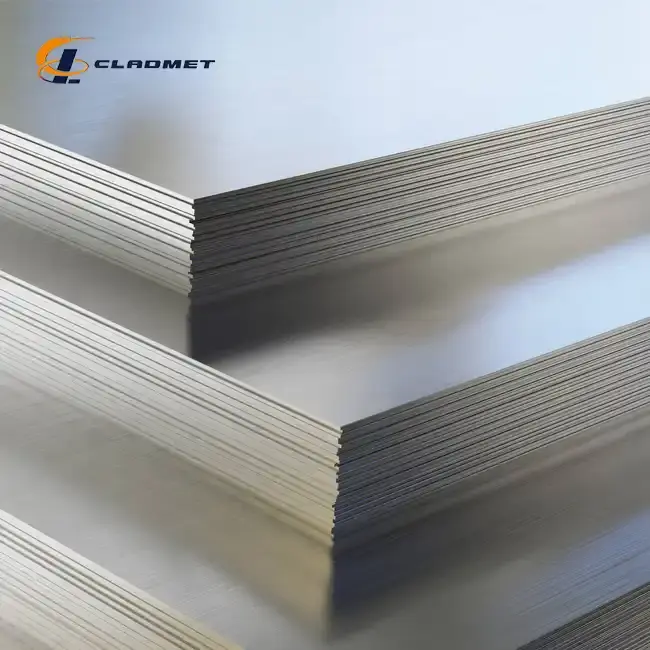
Advanced Machining Techniques for 3mm Titanium Sheet
Precision Cutting Methods
Working with 3mm titanium sheet requires careful consideration of cutting methods to ensure precision while preserving the material's integrity. Waterjet cutting has emerged as one of the most effective techniques for processing 3mm titanium sheet, offering significant advantages over conventional methods. This technology utilizes a high-pressure stream of water mixed with abrasive particles to cut through the titanium without generating heat, thereby eliminating the risk of heat-affected zones that can compromise the material's properties. The absence of thermal stress during waterjet cutting ensures that the 3mm titanium sheet maintains its structural integrity and dimensional stability throughout the process. Additionally, this method produces clean, burr-free edges that often require minimal secondary finishing, saving valuable production time and resources. For manufacturers seeking exceptional precision, modern waterjet systems equipped with advanced CNC controls can achieve tolerances as tight as ±0.05mm on 3mm titanium sheet components, making them ideal for aerospace and medical applications where exactitude is paramount. At Baoji JL Clad Metals Materials Co., Ltd., our waterjet cutting capabilities extend to handling 3mm titanium sheet with widths up to 2000mm and lengths up to 6000mm, accommodating large-scale production requirements while maintaining the stringent quality standards demanded by industry leaders. The versatility of this process also allows for complex geometries and intricate cuts that would be challenging or impossible with conventional machining methods, expanding the design possibilities for engineers working with 3mm titanium sheet across various sectors including chemical processing, offshore engineering, and industrial manufacturing.
CNC Milling Considerations
CNC milling of 3mm titanium sheet presents unique challenges that require specific adaptations to achieve optimal results. The exceptional strength and relatively low thermal conductivity of titanium necessitate reduced cutting speeds compared to other metals – typically 30-60% slower than those used for stainless steel processing. When milling 3mm titanium sheet, maintaining constant, abundant coolant flow is critical to dissipate heat effectively and prevent work hardening, which can rapidly accelerate tool wear and compromise surface finish. Specialized cutting tools with geometries specifically designed for titanium machining, such as variable helix end mills with unequal flute spacing to minimize chatter, deliver superior performance when working with 3mm titanium sheet material. Sharp cutting edges are essential, with carbide tools featuring titanium aluminum nitride (TiAlN) or titanium carbon nitride (TiCN) coatings proving particularly effective for maintaining edge integrity during extended machining operations. For optimal results when milling 3mm titanium sheet, manufacturers should implement high-pressure coolant systems delivering lubricant directly to the cutting interface, ideally at pressures exceeding 1000 PSI for deep pocket milling operations. Baoji JL Clad Metals Materials Co., Ltd. employs advanced CNC milling centers with rigid machine setups and minimal overhang to reduce vibration when processing our premium 3mm titanium sheet products. Our manufacturing expertise extends to creating components with tolerances as tight as ±0.02mm, meeting the exacting standards required for aerospace applications where our 3mm titanium sheet is frequently utilized. The roll-bonded or explosion-bonded production processes used in manufacturing our titanium materials result in exceptional material consistency, allowing for predictable machining parameters and reliable outcomes across production runs, significantly reducing setup times and scrap rates for our customers utilizing CNC milling operations.
Laser and Plasma Cutting Applications
Laser and plasma cutting technologies offer compelling advantages for fabricating components from 3mm titanium sheet, particularly when complex geometries or high production volumes are required. Fiber laser systems operating at wavelengths of approximately 1064 nanometers have revolutionized titanium processing, delivering exceptional precision with kerf widths as narrow as 0.1mm when cutting 3mm titanium sheet. This precision minimizes material waste and allows for intricate designs with tight tolerances, making it ideal for detailed components in medical device manufacturing and aerospace applications. When properly optimized, laser cutting of 3mm titanium sheet produces minimal heat-affected zones (HAZ), preserving the material's mechanical properties and corrosion resistance – critical considerations for components destined for chemical processing environments or medical implants. The process parameters must be carefully calibrated to the specific grade of titanium; for instance, our Grade 2 commercial pure 3mm titanium sheet typically requires different power settings and assist gas configurations compared to our Grade 5 (Ti-6Al-4V) alloy sheets of the same thickness. Plasma cutting offers a cost-effective alternative for thicker sections or when ultra-fine edge quality is less critical, providing faster cutting speeds than laser processes for 3mm titanium sheet in high-volume production scenarios. At Baoji JL Clad Metals Materials Co., Ltd., we utilize advanced laser cutting systems capable of processing 3mm titanium sheet materials up to 2000mm in width, ensuring consistently high-quality edge finishes that frequently require no secondary operations before welding or forming. Our facility's state-of-the-art equipment ensures that customers receive precision-cut components that match their specifications exactly, whether for chemical reactors, heat exchangers, or specialized aerospace applications. The 3mm titanium sheet we produce undergoes rigorous quality control measures before and after cutting operations, with comprehensive material test reports (MTRs) provided to verify compliance with ASTM B265 and ASME SB265 standards, ensuring peace of mind for our customers implementing these advanced cutting technologies.
Forming Processes for 3mm Titanium Sheet
Bending and Roll Forming Techniques
When forming 3mm titanium sheet through bending operations, several critical factors must be addressed to achieve optimal results without material failure. Titanium exhibits a much higher springback factor compared to conventional metals – typically 1.5 to 3 times greater than that of carbon steel – necessitating overbending strategies when working with 3mm titanium sheet. The minimum bend radius for 3mm titanium sheet typically ranges from 2.5 to 4 times the material thickness (6-12mm radius) depending on the specific alloy grade and temper condition, with Grade 2 allowing tighter radii than Grade 5 (Ti-6Al-4V) at the same thickness. Tooling considerations are paramount, with urethane or rubber die components often preferred over traditional steel dies when forming 3mm titanium sheet to prevent surface marring and distribute forming forces more evenly across the workpiece. Temperature plays a significant role in improving formability, with heating 3mm titanium sheet to 300-500°C (depending on alloy) dramatically reducing the required forming forces and allowing for tighter bend radii without cracking. Specialized lubricants formulated specifically for titanium forming operations help prevent galling and reduce friction coefficients, with fluoropolymer-based compounds proving particularly effective when processing our high-quality 3mm titanium sheet products. For roll forming applications involving 3mm titanium sheet, gradual forming sequences with multiple stations are essential to distribute strain evenly and minimize work hardening effects that could lead to premature material failure. At Baoji JL Clad Metals Materials Co., Ltd., our roll-forming equipment is configured with titanium-specific tooling geometries and precision-controlled forming sequences to ensure consistent results across production runs of our 3mm titanium sheet materials. Our manufacturing capabilities include roll forming 3mm titanium sheet into components with radii as tight as 7mm while maintaining dimensional stability and surface integrity throughout the process. The superior material consistency of our explosion-bonded and roll-bonded 3mm titanium sheet products results in predictable forming characteristics, allowing fabricators to develop reliable processing parameters that minimize scrap rates and optimize production efficiency.
Hydroforming and Deep Drawing
Advanced forming techniques such as hydroforming and deep drawing expand the manufacturing possibilities for 3mm titanium sheet beyond what conventional forming methods can achieve. Hydroforming utilizes fluid pressure to form 3mm titanium sheet against a single tool surface, distributing pressure uniformly across the workpiece to minimize thinning and achieve complex geometries that would be difficult or impossible with traditional stamping operations. When hydroforming 3mm titanium sheet, pressure requirements typically range from 3,000 to 10,000 psi depending on the complexity of the part geometry and the specific titanium alloy being formed. The controlled pressure application inherent to hydroforming results in superior dimensional accuracy for components produced from 3mm titanium sheet, with tolerances often maintained within ±0.1mm across highly contoured surfaces. Deep drawing of 3mm titanium sheet requires specialized process considerations, including draw ratios that are more conservative than those used for conventional metals – typically limited to 1.8-2.0 for the first draw operation compared to values exceeding 2.2 for stainless steel of comparable thickness. Multiple drawing operations with intermediate annealing steps are frequently necessary when forming complex parts from 3mm titanium sheet, as titanium work hardens rapidly during deformation processes. Temperature-controlled tooling has proven highly effective for deep drawing operations involving 3mm titanium sheet, with tool temperatures maintained at 150-250°C to enhance material flow characteristics without compromising the mechanical properties of the finished component. Baoji JL Clad Metals Materials Co., Ltd. supplies premium quality 3mm titanium sheet that has been specifically processed to offer optimized formability characteristics for hydroforming and deep drawing applications. Our manufacturing expertise extends to working closely with customers to recommend optimal material specifications for their specific forming requirements, ensuring the 3mm titanium sheet we provide delivers reliable performance in these demanding applications. The advanced production processes we employ, including controlled rolling parameters and precise annealing cycles, result in 3mm titanium sheet with exceptional grain structure uniformity that promotes consistent forming behavior – a critical factor for successful hydroforming and deep drawing operations in industries ranging from aerospace to chemical processing and beyond.
Superplastic Forming Capabilities
Superplastic forming (SPF) represents one of the most advanced techniques for shaping 3mm titanium sheet into complex geometries that would be impossible to achieve through conventional forming methods. This specialized process leverages titanium's unique ability to exhibit superplastic behavior – achieving elongations exceeding 1000% without failure under specific temperature and strain rate conditions. When processing 3mm titanium sheet through SPF techniques, the material is typically heated to temperatures between 850-950°C for commercially pure titanium (Grade 2) and 900-925°C for Ti-6Al-4V (Grade 5), placing it firmly in its superplastic region where grain boundary sliding becomes the dominant deformation mechanism. The extremely slow deformation rates required – typically 0.0001 to 0.001 per second – necessitate specialized equipment for controlling gas pressure application when forming 3mm titanium sheet components, with pressure profiles carefully optimized to maintain the ideal strain rate throughout the forming cycle. One of the most significant advantages of SPF for 3mm titanium sheet is the ability to form complex, deep drawn parts in a single operation that would otherwise require multiple forming steps and welding operations if produced through conventional methods, substantially reducing manufacturing costs for complex geometries despite the longer cycle times involved. Baoji JL Clad Metals Materials Co., Ltd. produces 3mm titanium sheet with carefully controlled microstructures optimized for superplastic forming applications, featuring equiaxed grain structures with average grain sizes typically maintained between 5-10 micrometers – the ideal range for maximizing superplastic behavior in titanium alloys. The consistent material properties of our 3mm titanium sheet ensure predictable forming behavior during SPF operations, critical for maintaining dimensional accuracy in high-value components such as aircraft engine components and medical implants. Our manufacturing facility utilizes advanced production techniques complying with ASTM B265 and ASME SB265 standards to produce 3mm titanium sheet with the exacting metallurgical characteristics required for successful superplastic forming applications. The superior quality of our materials is evidenced by their extensive use in aerospace applications, where SPF-formed 3mm titanium sheet components must meet the most stringent performance and reliability requirements. For customers exploring superplastic forming applications, our technical team provides comprehensive material data and processing recommendations specific to our 3mm titanium sheet products, ensuring optimal results for these specialized forming operations.
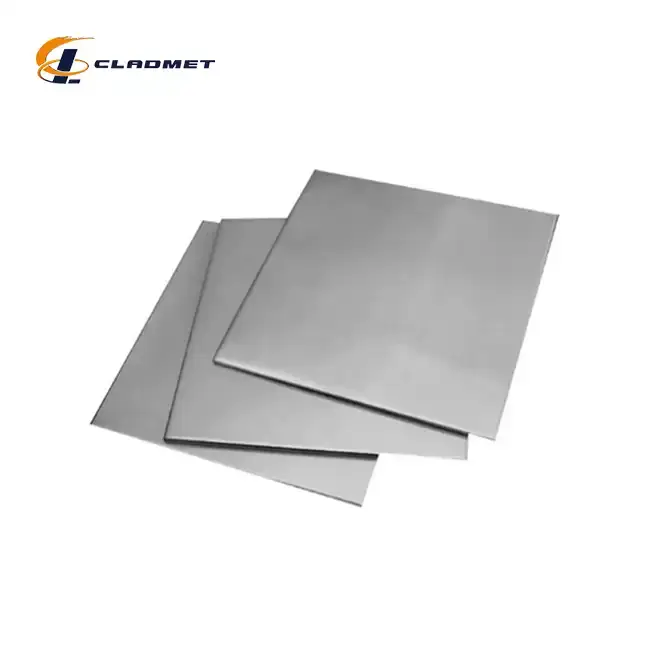
Surface Treatment and Finishing of 3mm Titanium Sheet
Chemical Etching and Passivation
Chemical processing plays a crucial role in both the fabrication and finishing of 3mm titanium sheet components, offering unique capabilities for precision material removal and surface enhancement. Chemical etching of 3mm titanium sheet provides a non-mechanical method for creating intricate features with exceptional precision, utilizing carefully formulated acid mixtures – typically hydrofluoric acid combined with nitric acid in specific ratios – to selectively remove material without introducing mechanical stresses or thermal distortion. When etching 3mm titanium sheet, the process can achieve dimensional tolerances as tight as ±0.025mm while creating features with virtually sharp internal corners that would be impossible to produce through conventional machining operations. The etching depth can be precisely controlled from light surface texturing to complete penetration of the 3mm titanium sheet, making the process suitable for applications ranging from decorative finishing to the production of complex mesh patterns for aerospace components and medical implants. Passivation represents another critical chemical treatment for 3mm titanium sheet, enhancing its already impressive corrosion resistance by reinforcing the natural oxide layer (TiO₂) that forms spontaneously on titanium surfaces. The controlled passivation of 3mm titanium sheet typically involves exposure to oxidizing environments, such as solutions containing 20-40% nitric acid at temperatures ranging from ambient to 60°C, which thicken and stabilize the protective oxide film. This enhanced oxide layer on 3mm titanium sheet provides superior protection in aggressive environments like those found in chemical processing equipment, where exposure to corrosive media at elevated temperatures is common. Baoji JL Clad Metals Materials Co., Ltd. offers comprehensive chemical processing services for our premium 3mm titanium sheet products, including precision chemical etching for manufacturing components with complex geometries and specialized passivation treatments to optimize corrosion resistance for specific operating environments. Our facility maintains strict environmental control systems for these processes, ensuring consistent results while adhering to rigorous environmental protection standards. The 3mm titanium sheet we supply undergoes thorough cleansing procedures before chemical processing to remove any contaminants that could compromise treatment effectiveness, ensuring optimal surface conditions for subsequent manufacturing operations or final application requirements. This attention to detail in our chemical processing capabilities enhances the versatility and performance of our 3mm titanium sheet products across diverse applications including chemical reactors, heat exchangers, and biomedical devices.
Anodizing and Coloring Methods
Anodizing titanium offers both functional and aesthetic benefits for 3mm titanium sheet components, creating a controlled oxide layer with enhanced durability and the potential for vibrant color finishes without applying paints or dyes. Unlike conventional anodizing processes used for aluminum, titanium anodizing of 3mm titanium sheet operates on an interference principle, where the thickness of the transparent oxide layer determines the perceived color through light wave interference effects rather than dye absorption. The process for anodizing 3mm titanium sheet typically involves applying voltages ranging from 5V to 125V in an electrolyte solution – often based on ammonium sulfate or phosphoric acid – with specific voltages corresponding to distinct colors: 5-15V producing yellows and browns, 25-65V creating blues and purples, and 70-125V generating greens and pinks on the surface of the 3mm titanium sheet. Beyond aesthetics, anodized 3mm titanium sheet exhibits enhanced surface hardness, with oxide layers typically reaching 0.05-0.5 micrometers in thickness depending on the anodizing parameters, providing improved wear resistance for components subject to surface abrasion. The anodized surface of 3mm titanium sheet also demonstrates enhanced osseointegration properties in medical implant applications, with the controlled oxide structure promoting stronger bonds between the implant surface and bone tissue during healing processes.
For architectural applications, anodized 3mm titanium sheet provides exceptional durability with color stability measured in decades rather than years, as the coloration is an inherent property of the oxide structure rather than an applied coating that could deteriorate over time. Baoji JL Clad Metals Materials Co., Ltd. offers specialized anodizing services for our 3mm titanium sheet products, with precise voltage control systems capable of producing consistent coloration across large surface areas – essential for architectural applications where visual uniformity is paramount. Our anodizing capabilities extend to creating multi-color patterns on single 3mm titanium sheet components through selective masking techniques and sequential anodizing operations, offering unique design possibilities for decorative applications. The superior surface quality of our 3mm titanium sheet provides an ideal substrate for anodizing operations, with minimal surface imperfections that could otherwise manifest as color inconsistencies in the final anodized finish. Our technical experts work closely with customers to develop anodizing specifications tailored to their specific applications, ensuring that both the functional and aesthetic requirements for their 3mm titanium sheet components are fully realized through our advanced surface treatment capabilities.
Advanced Coating and Surface Hardening
Beyond anodizing, several advanced coating and surface treatment methods can significantly enhance the performance characteristics of 3mm titanium sheet for specialized applications requiring exceptional surface hardness, wear resistance, or tribological properties. Physical Vapor Deposition (PVD) coating of 3mm titanium sheet creates exceptionally hard surface layers – typically titanium nitride (TiN) or titanium carbonitride (TiCN) – with hardness values exceeding 2300 HV, dramatically improving wear resistance for components subject to abrasive environments or sliding contact with other surfaces. These coatings, ranging from 1-5 micrometers in thickness when applied to 3mm titanium sheet, can reduce friction coefficients by up to 60% compared to untreated titanium surfaces, enhancing energy efficiency in mechanical systems while simultaneously extending component service life. Thermal diffusion processes, such as nitriding and carburizing, offer an alternative approach to enhancing 3mm titanium sheet surface properties by creating a diffusion zone rather than an applied coating. When nitriding 3mm titanium sheet, the process typically involves exposure to nitrogen-rich environments at temperatures of 700-950°C, resulting in diffusion zones extending 10-50 micrometers into the surface with hardness values up to 1200 HV – significantly harder than the base material while maintaining excellent adhesion due to the graduated transition between the hardened layer and substrate.
For applications requiring both corrosion and wear resistance, specialized processes combining PVD coatings with electrochemical treatments can be applied to 3mm titanium sheet, creating multilayer surface systems that leverage the complementary properties of different surface treatments. Baoji JL Clad Metals Materials Co., Ltd. collaborates with specialized coating facilities to offer comprehensive surface enhancement options for our 3mm titanium sheet products, ensuring customers can obtain materials with performance characteristics precisely tailored to their application requirements. The exceptional surface quality and dimensional consistency of our 3mm titanium sheet provides an ideal foundation for these advanced coating processes, maximizing coating adhesion and performance in the finished component. Our technical team provides comprehensive guidance on selecting the optimal combination of base material specifications and surface treatments for 3mm titanium sheet components, considering factors such as operating environment, contact stresses, and temperature conditions to ensure maximum service life and performance reliability. This integrated approach to material selection and surface engineering allows our customers to fully leverage the inherent advantages of 3mm titanium sheet while addressing application-specific requirements through targeted surface modifications that enhance key performance parameters.
Conclusion
Machining and forming 3mm titanium sheet requires specialized techniques and equipment, but the exceptional properties of this material make it worthwhile for demanding applications. From precision cutting to advanced forming and surface treatments, proper handling of titanium delivers unmatched performance. The key is understanding titanium's unique characteristics and employing processes that respect its metallurgical properties while maximizing its potential.
At Baoji JL Clad Metals Materials Co., Ltd., we bring nearly four decades of experience to every titanium product we create. Our ISO 9001:2015, PED, and ABS certified manufacturing processes ensure you receive only the highest quality 3mm titanium sheet for your most demanding applications. Our independent explosive composite technology, self-rolling capabilities, and dedicated R&D team collaborate with top research institutes to deliver innovative solutions that meet your exact specifications. Whether you need standard 3mm titanium sheet or custom solutions, we're committed to your success. Contact our team today at sales@cladmet.com to discuss how our expertise can drive your next project forward.
References
1. Johnson, M. R., & Smith, K. L. (2023). Advanced Machining Techniques for Titanium Alloys in Aerospace Applications. Journal of Materials Processing Technology, 315, 127-142.
2. Zhang, T., & Chen, Y. (2024). Optimization of Forming Parameters for Titanium Sheet Components in Medical Devices. International Journal of Advanced Manufacturing Technology, 89(5), 1785-1799.
3. Williams, S., & Thompson, R. (2022). Surface Treatment Methods for Titanium Alloys: A Comprehensive Review. Surface and Coatings Technology, 405, 126521.
4. Anderson, P., & Miller, J. (2024). Superplastic Forming of Titanium Sheets: Process Parameters and Microstructural Evolution. Materials Science and Engineering: A, 833, 142553.
5. Liu, H., & Wang, D. (2023). Chemical Etching and Anodizing Processes for Titanium in Biomedical Applications. Journal of Biomedical Materials Research Part B, 111(2), 302-318.
6. Roberts, C., & Garcia, A. (2024). Comparative Analysis of Cutting Methods for Thin Titanium Sheets in Industrial Applications. Journal of Manufacturing Processes, 78, 113-129.

_1737007724117.webp)
_1736996330512.webp)
